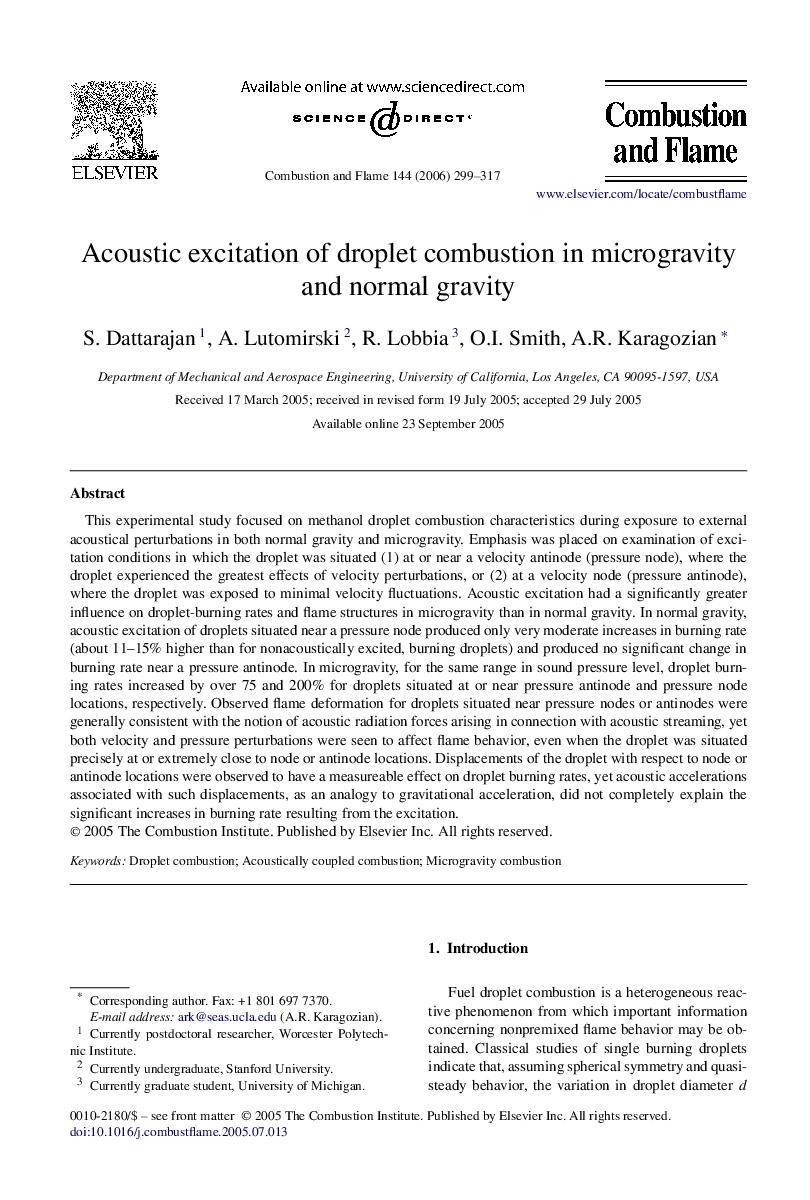| Article ID | Journal | Published Year | Pages | File Type |
|---|---|---|---|---|
| 168328 | Combustion and Flame | 2006 | 19 Pages |
This experimental study focused on methanol droplet combustion characteristics during exposure to external acoustical perturbations in both normal gravity and microgravity. Emphasis was placed on examination of excitation conditions in which the droplet was situated (1) at or near a velocity antinode (pressure node), where the droplet experienced the greatest effects of velocity perturbations, or (2) at a velocity node (pressure antinode), where the droplet was exposed to minimal velocity fluctuations. Acoustic excitation had a significantly greater influence on droplet-burning rates and flame structures in microgravity than in normal gravity. In normal gravity, acoustic excitation of droplets situated near a pressure node produced only very moderate increases in burning rate (about 11–15% higher than for nonacoustically excited, burning droplets) and produced no significant change in burning rate near a pressure antinode. In microgravity, for the same range in sound pressure level, droplet burning rates increased by over 75 and 200% for droplets situated at or near pressure antinode and pressure node locations, respectively. Observed flame deformation for droplets situated near pressure nodes or antinodes were generally consistent with the notion of acoustic radiation forces arising in connection with acoustic streaming, yet both velocity and pressure perturbations were seen to affect flame behavior, even when the droplet was situated precisely at or extremely close to node or antinode locations. Displacements of the droplet with respect to node or antinode locations were observed to have a measureable effect on droplet burning rates, yet acoustic accelerations associated with such displacements, as an analogy to gravitational acceleration, did not completely explain the significant increases in burning rate resulting from the excitation.
